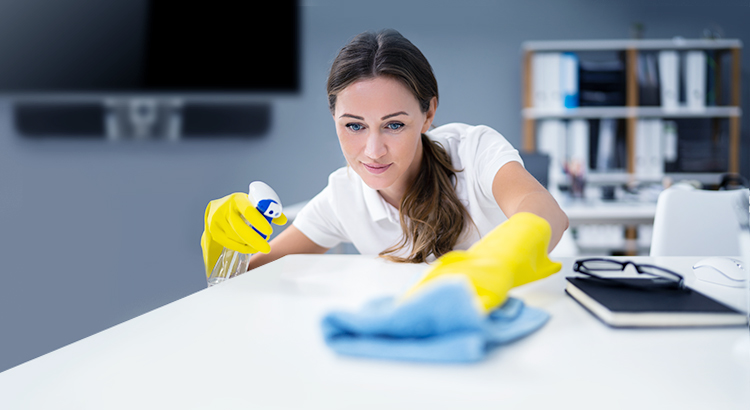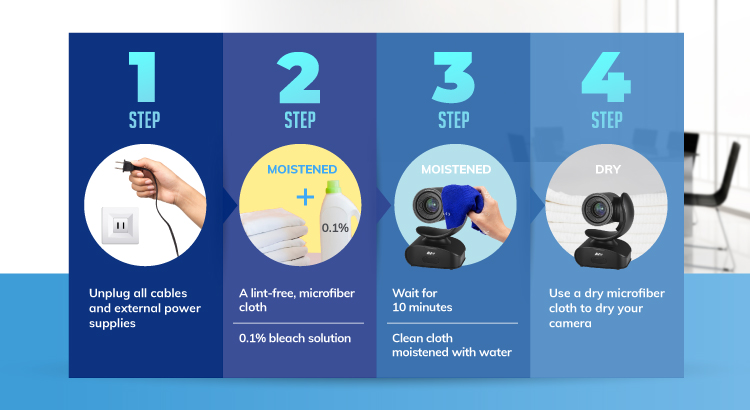
Quick Links
With the recent burst of telecommuting activity due to widespread changes in the business travel landscape, your video conferencing cameras are likely shouldering a heavier load than usual. Consequently, you may be wondering if you should clean your devices.
If your conference cameras are installed in the meeting room and no one needs to touch them, it’s not necessary to disinfect them. Instead, clean the touch system or remote control. On the other hand, devices that are frequently handled should be regularly disinfected to help you keep your business running smoothly without spreading germs.
But before you rush in with whatever random cleaning supplies you have on hand, take a look at the following tips to make sure you don’t harm your equipment.
Chemical to Use

When it comes time to clean your camera, ease of access may tempt you to grab the alcohol you use on your hands and desk, but do not make that mistake! Such solutions are typically up to 75% alcohol, a high-octane mixture that can do serious harm to the coating on your camera lens.
Instead, opt for sodium hypochlorite (NaOCI), more commonly known as bleach. A 0.1% sodium hypochlorite solution will gently clean and effectively disinfect your device. The bleach available at the store will likely come in a 5% sodium hypochlorite solution, so you’ll need to dilute it for safe usage on your devices. Here’s a handy mixing guide for reaching the 0.1% dilution, adapted from the Australian Department of Health:
| Original Bleach Concentration (%) |
Parts of Bleach |
Parts of Water |
| 1 |
1 |
9 |
| 2 |
1 |
19 |
| 3 |
1 |
29 |
| 4 |
1 |
39 |
| 5 |
1 |
49 |
Just remember that the solution has a short shelf life of 24 hours, so don’t make too much at one time.
Steps to Follow

You’re armed with your cleaning agent, so the next question is how to apply it to your valuable conferencing hardware. Here’s a step-by-step guide:
- Step 1: Unplug all cables and external power supplies.
- Step 2: Wipe the camera with a lint-free, microfiber cloth that has been moistened with the 0.1% bleach solution. (Do NOT use a rough cloth that could scratch your lens, and do NOT spray the product directly, as liquid could seep inside and cause conductive damage.)
- Step 3: Wait for ten minutes, and then wipe the device again, this time using a clean cloth moistened with water.
- Step 4: Use a dry microfiber cloth to dry your camera. Make sure it is completely dry before reconnecting cables and power sources.
Follow this simple procedure daily to ensure your work environment is as safe and clean as possible. Everyone in your office will thank you!
About the Author

Aaron Case is a Brand Communication Strategist at AVer Information, working out of Taipei, Taiwan. He crafts press releases, blog posts, and other marketing materials to support AVer's global branding efforts.